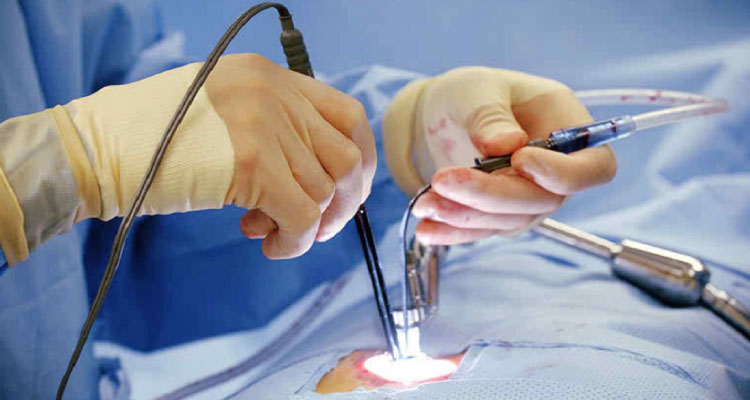
Keyhole surgery, often known as "minimally invasive surgery" or simply "key surgery," is a technique for performing surgeries on the body that does not necessitate making significant incisions in the skin to obtain access to the spine. There is always some collateral harm to the body with every type of incision or access operation. Such damage can be minimized by using minimal access approaches such as (MISS).
Surgeons are using keyhole surgery to operate on the spine. The following are the primary drivers:
- Less time spent recovering (patients can return to normal activities within a week after surgery).
- In most cases, there is no need for long-term hospitalization.
- Much fewer scars than those left by traditional open surgery
After the surgery, the pain is usually reduced.
However, the KeyHole technique has several potential risks compared to open surgery. To be more specific, they have to do with the surgeon's inability to feel body tissue because he employed an instrument that works from a distance rather than directly with his hands. Second, a camera that does not have the same depth of field as a direct display is used to view the organ. Instead of using an endoscope, try using a Microscope. KeyHole procedures are frequently performed by surgeons trained to recognize these subtle distinctions. With the correct surgeon, the chance of an accidental injury is reduced.
When deciding between Key Hole and standard surgery, it's essential to consider the tumor's type, size, and location.
What Is the Procedure for Keyhole Surgery?
A general anaesthetic is frequently used for keyhole surgery. It means that patients are put to sleep during the procedure and wake up after it is over.
A little metal tube called a cannula is inserted into the spine surgery site after repeated dilations of the soft tissue have been performed on the patient after they have fallen asleep and been correctly positioned. This telescope projects high-quality video images onto a television screen with a small camcorder. Microscopes and magnification are sometimes made more accessible by using specific micro lumbar retractors.
Incisions are stitched, and patients are brought to a recovery room to awaken from anesthesia when the treatment is completed.
To do keyhole surgery, the patient must be in good health. The answer to that question depends on what you're dealing with right in your back. This procedure, like open surgery, has a somewhat higher risk of complications.
Dr. Sk Rajan Is Your Best Choice
Dr Sk Rajan performs keyhole spine surgeries with extensive surgical skills and specialized training, backed by the latest cutting-edge technology. Spondylolisthesis (spinal misalignment), stabilization of fractures, removal of spinal tumors, and spinal fusion are among the problems that Dr. Sk Rajan treats in adults and children.


